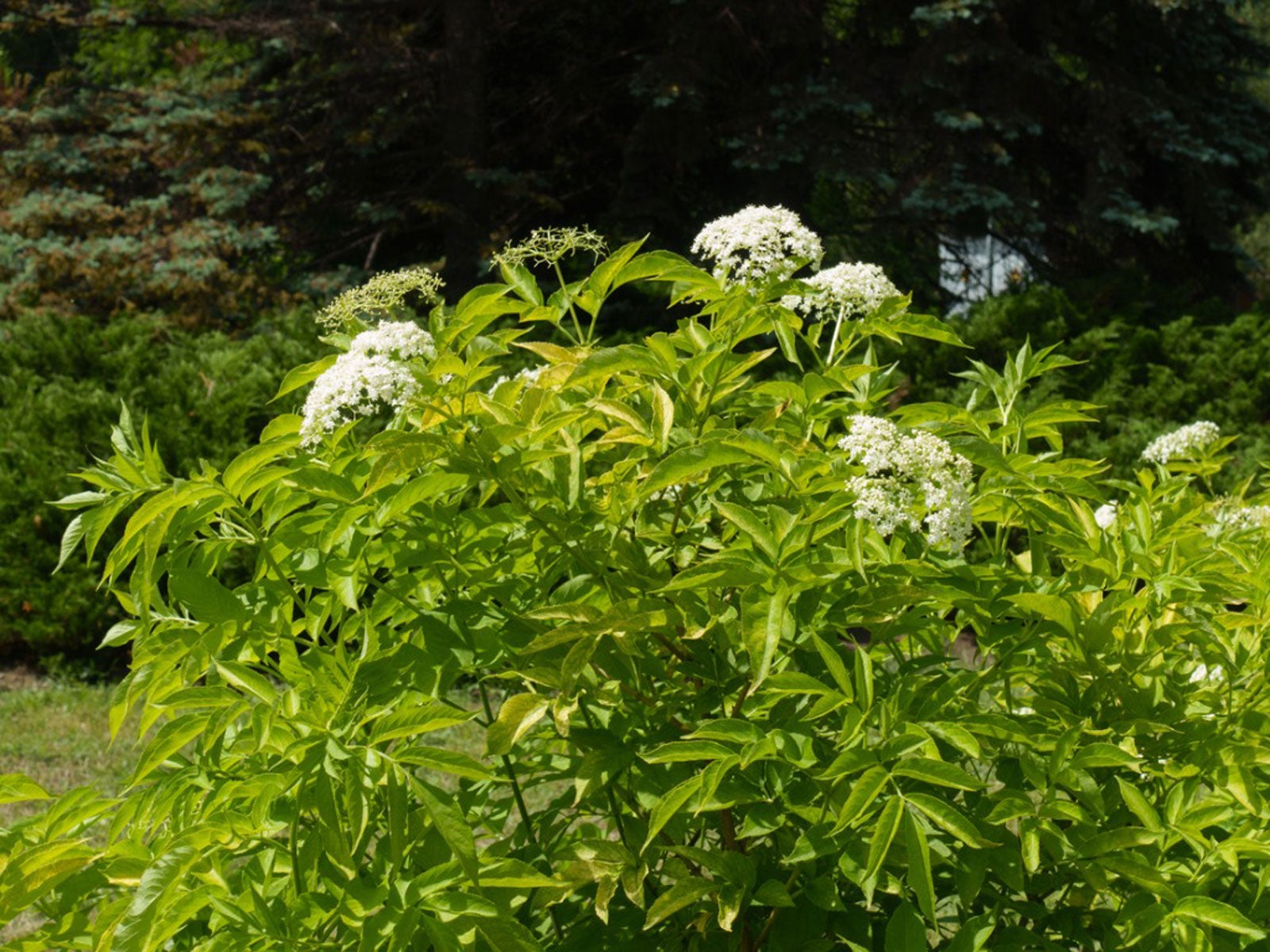Trimming Elderberry Plants: Learn About Pruning An Elderberry

Elderberry, a large shrub/small tree native to eastern North America, produces edible, small-clustered berries. These berries are extremely tart but are sublime when cooked down with sugar in pies, syrups, jams, jellies, juices, and even wine. If you have an elderberry bush in the home garden, elderberry pruning is a necessity. The question is, how to prune elderberries correctly?
Why Prune Elderberry Bush?
Pruning of elderberries is important not only for the health aspect and overall appearance, but it's necessary for ensuring the continual bearing of fruits. For the first two to three years of growth, let the elderberries grow wild with the exception of pruning out dead or damaged canes. Thereafter, prune elderberry bush regularly to make way for younger, vigorous canes. As the canes age, they lose their fruitfulness.
How to Prune Elderberries
Pruning an elderberry shrub is a fairly simple task and should take place in winter when the plant is dormant. Before you begin trimming elderberry plants, as when pruning any fruit-bearing plants, sanitize the pruning shears to avoid passing on potential diseases.
When trimming elderberry plants, remove any dead, broken, or noticeably low-yield canes from the shrub at the trunk with the shears. Canes that are over three years old go next. Elderberry canes are at peak production in their first three years; thereafter, productivity declines, so it is best to cut them out at this juncture of the elderberry pruning. Leaving these aging canes only drains the plant's energy as well as leaving it more prone to winter damage. P
runing an elderberry bush encourages the existing canes to be more productive. An elderberry plant really only needs between six to eight canes to survive, but unless necessary due to breakage or the like, there is no need to be so severe. Leave an equal number (anywhere from two to five) of one-, two-, and three-year-old canes. When pruning the elderberry, snip the long canes on a diagonal cut.
Cuttings from Elderberry Pruning
Elderberries may be propagated by hardwood cuttings, so if you desire additional plants, pruning viable canes can take place in early spring before bud break. Take a 10- to 12-inch (25.5-30 cm.) cutting from living canes of the previous season's growth. Plant them 10-12 inches (25.5-30 m.) apart in rows with the top bud exposed. Tamp the soil around the cuttings and water just until moist.
Cuttings can then be transplanted early the next spring. You can also take root cuttings the width of a pencil and 4-6 inches (10-15 cm.) long in late winter when the plant is dormant. Put these in pots covered with one inch (2.5 cm.) of soil or soilless medium and place them in a warm, moist area. Root cuttings may produce two or three plants.
Sign up for the Gardening Know How newsletter today and receive a free copy of our e-book "How to Grow Delicious Tomatoes".

Amy Grant has been gardening for 30 years and writing for 15. A professional chef and caterer, Amy's area of expertise is culinary gardening.
